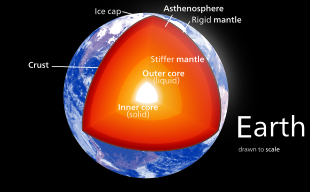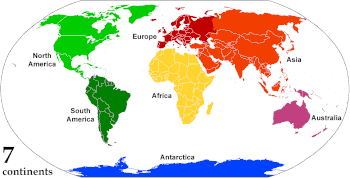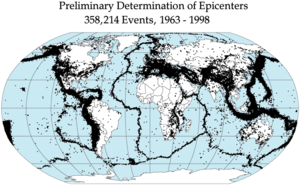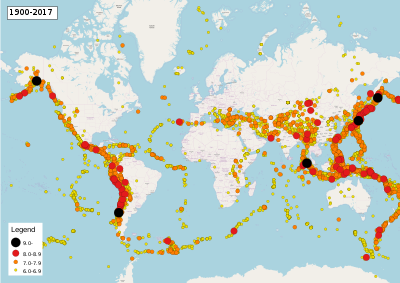
Геология (от древнегреческого γῆ ( gê ) «земля» и λoγία ( -logía ) «изучение, рассуждение») — раздел естествознания , изучающий Землю и другие астрономические объекты , горные породы , из которых они состоят, и процессы, посредством которых они изменяются с течением времени. Современная геология существенно перекрывает все другие науки о Земле , включая гидрологию . Он интегрирован с наукой о системе Земли и планетарной наукой .
Геология описывает структуру Земли на ее поверхности и под ней, а также процессы, которые сформировали эту структуру. Геологи изучают минералогический состав горных пород, чтобы понять историю их формирования. Геология определяет относительный возраст горных пород, найденных в данном месте; геохимия (раздел геологии) определяет их абсолютный возраст . Объединив различные петрологические, кристаллографические и палеонтологические инструменты, геологи могут вести хронику геологической истории Земли в целом. Одним из аспектов является демонстрация возраста Земли . Геология предоставляет доказательства тектоники плит , эволюционной истории жизни и климата Земли в прошлом .
Геологи широко изучают свойства и процессы на Земле и других планетах земной группы. Геологи используют широкий спектр методов для понимания структуры и эволюции Земли, включая полевые исследования , описание горных пород , геофизические методы , химический анализ , физические эксперименты и численное моделирование . В практическом плане геология важна для разведки и эксплуатации полезных ископаемых и углеводородов , оценки водных ресурсов , понимания природных опасностей , устранения экологических проблем и предоставления информации о прошлых изменениях климата . Геология является основной академической дисциплиной , занимает центральное место в геологической инженерии и играет важную роль в геотехнической инженерии . ( Полная статья... )















Следующие дочерние проекты Фонда Викимедиа предоставляют дополнительную информацию по этому вопросу: